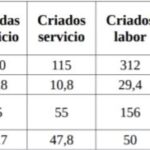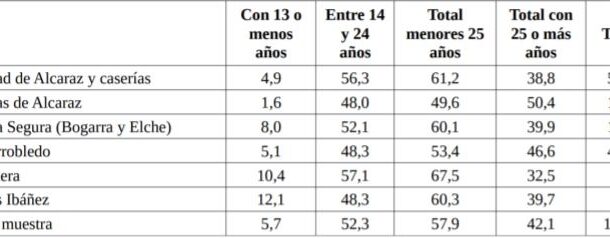The table presented reflects the number and percentage of heads of households who have servants in their service, as well as the typology of the servants. The relationship between both factors, masters and servants, is determined by the socio-economic structure of the territory. Thus, in Ciudad Real, which had a strong agrarian oligarchy, the number of servants per head of household was high, even more so among the wealthy strata of local society. Analysing the data, 61.3% of the servants in Ciudad Real depended on perpetual offices and hidalgos in 1751. In total, of the 50 heads of privileged families, the servant servants numbered 55 and the servant maids 75, showing a preference for females in domestic tasks. On the other hand, the labour and livestock servants numbered 156 and 363 respectively, the vast majority of whom were male. On average, there were 13 servants per wealthy family. The situation of many workers was one of dependence on the master; even more so if we consider the servants in service (the typical profile was female, orphaned, single and young).
Collection: Statistics
Project: 3. Rural world and urban world in the formation of the European identity., 4. Family, daily life and social inequality in Europe.
Chronology: XVIII
Scope: Secondary Education, Baccalaureate, University
Link: https://www.mundoagrario.unlp.edu.ar/article/view/MAe071/9057
Resource type: Statistics
Format: Table
Source: García González, F. (2017). "Sirvientes y criados en el mundo rural de la España interior, 1700-1860. Desigualdad social y dependencia", en Mundo Agrario, vol. 18, nº 39, p. 12.
Language: Spanish
Date: 2017
Owner: Pablo Ballesta Fernández (Modernalia)
Copyright: © Francisco García González © Mundo Agrario, 2017
Abstract: Ratio of the number of servants to the number of heads of households belonging to the agrarian oligarchy
Image
Tags






